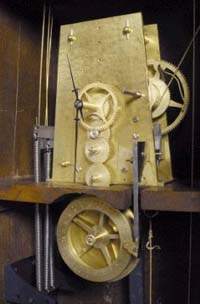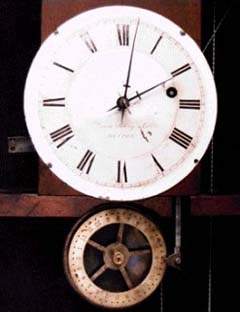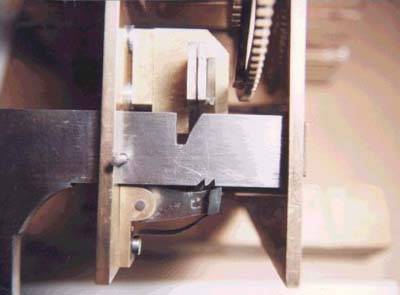|
|
This system marks the transition from single station pin clocks (see I.D.
50)
to central station systems that use electric circuits as the connection from several remote stations to a central recorder. In this early device, rather than electric wires to connect the remote stations to the central recorder, iron wires are used to transmit mechanical motion when the watchman "pulls" each remote station.
Edward Howard, who subsequently developed a more practical version of the present unit (see I.D. 494) as well as the first widely accepted electric system (see I.D. 496), had made mechanical units like that pictured here when in partnership with David Davis in the 1850s. Before that they both had
been exposed to similar devices while apprenticed to the younger Aaron Willard. A unit at the Peabody & Essex Museum, Salem MA., marked "Aaron Willard," operates on the same system of levers that is used in this Davis
& Polsey clock. The Peabody & Essex clock is likely to have been made in England by one of the regular suppliers to Willard, particularly Robert Roskell. Another unit, at the Willard House and Clock Museum, Grafton,
MA., is marked "A. Willard, Jr." It seems to be an unfinished inventor's model that was an attempt to work out the mechanics of a multi-station device that had been described, very broadly, in an English publication
of 1819. See Paul Harrison, "The Watchman's Tell-Tale Clock" (1800-1920). The described unit was to be used in conjunction with a regular pin clock. It accepted mechanical pulls from several stations in a
prescribed sequence and, if all were completed, depressed the appropriate pin on the clock's pin wheel (see I.D. 50). |
|



